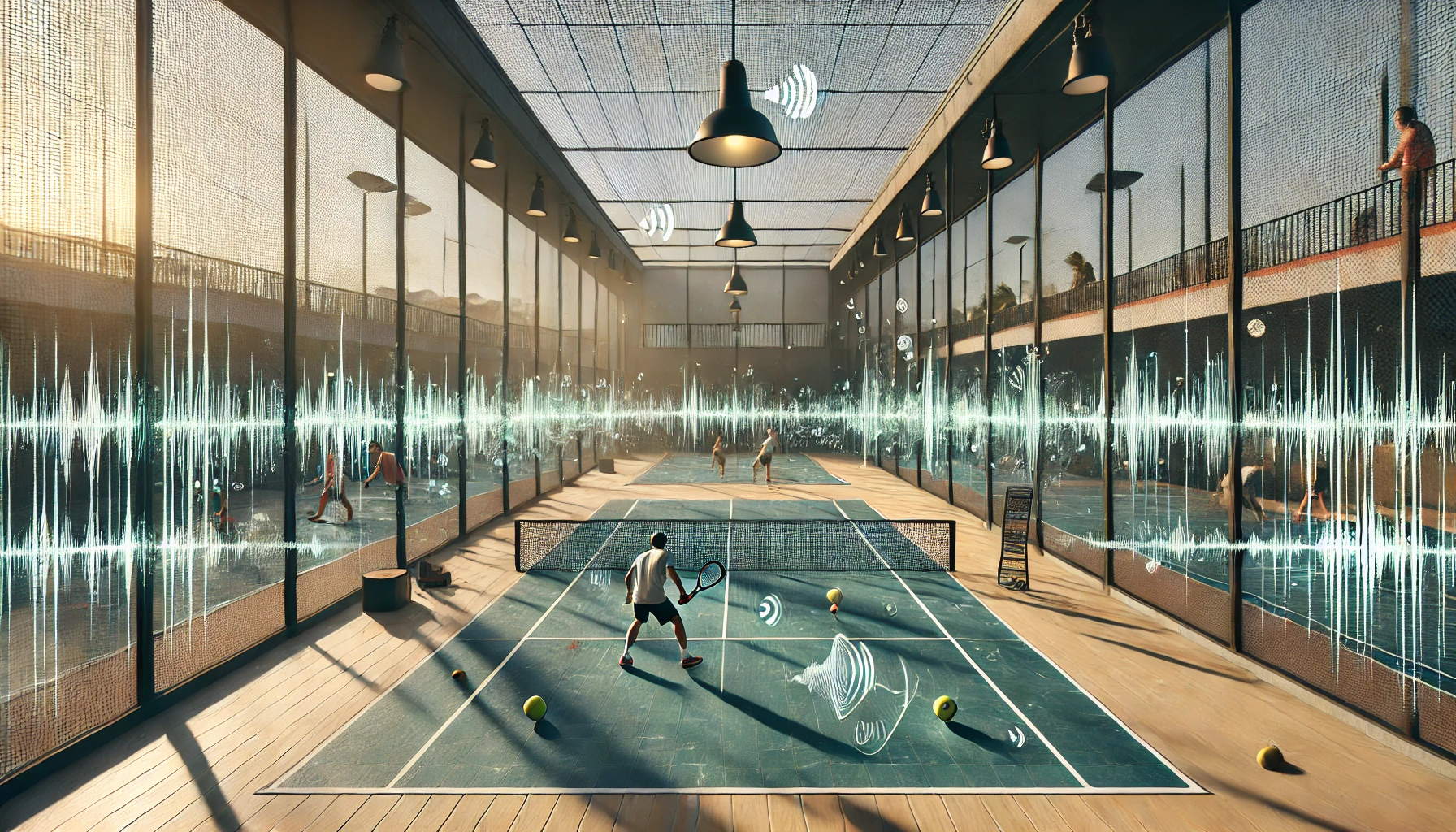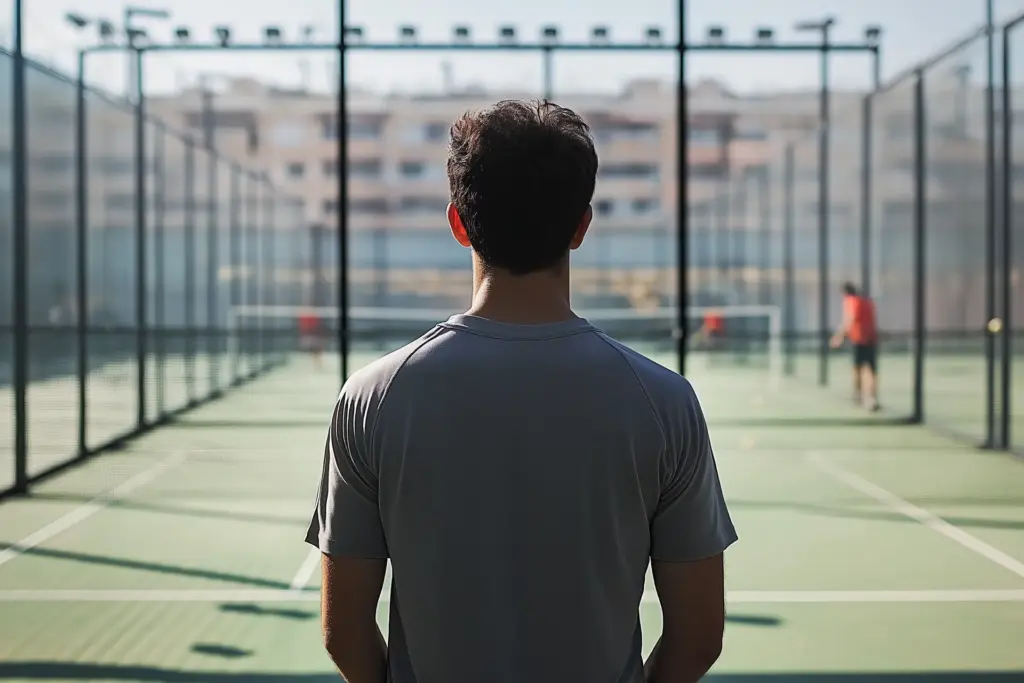As padel gains momentum across the globe, more and more sports clubs and residential communities are embracing the trend by investing in padel courts. However, this exciting growth brings with it the challenge of managing noise levels, especially when these courts are situated close to residential areas. In this blog post, we delve into the sources of padel court noise, its effects on nearby residents, and offer practical guidelines and strategies to minimize noise, ensuring a harmonious coexistence between padel enthusiasts and their neighbors.
Padel courts are vibrant places, echoing with the constant sound of the ball hitting walls, rackets, and the court surface. This is further amplified by player interactions and enthusiastic cheering. Such activities can generate significant noise, particularly during peak hours.
Living near a padel court can be a mixed experience for residents. While some may enjoy the lively atmosphere, others might find the noise levels disruptive. Understanding the impact of padel noise is crucial for fostering a positive relationship between sports clubs and the local community.
- Disruption of Peace: Constant noise can disturb the peaceful environment of residential areas.
- Impact on Sleep: Evening and nighttime games can affect residents’ sleep patterns.
- Quality of Life: Persistent noise may affect the overall quality of life, leading to stress and discomfort.

To ensure that padel courts coexist harmoniously with residential communities, it is essential to adopt effective noise management strategies. Here are some key guidelines:
- Strategic Placement: Position courts further away from residential areas to naturally reduce noise impact.
- Sound Barriers: Utilize fences, walls, or vegetation as noise buffers.
- Operational Hours: Limit playing times to avoid late-night disturbances.
- Community Engagement: Involve local residents in planning and decision-making processes to address their concerns.
- Advanced Materials: Consider using surfaces and materials designed to absorb sound.
By comprehensively understanding and addressing the noise associated with padel courts, we can create environments where both padel enthusiasts and residents thrive. Through thoughtful planning and community collaboration, the joys of padel can be shared without compromising the tranquility of residential areas.
When you’re on a padel court, the noise levels can typically fluctuate between 70 and 90 decibels. This is akin to the sound of bustling traffic or the hum of a vacuum cleaner, creating a lively and energetic atmosphere.
Impact on Residential Areas
However, this excessive noise can significantly impact the quality of life in adjacent residential areas. It may lead to disturbances and even provoke health issues such as stress and sleep disruption. Therefore, it’s crucial to account for these factors when planning the installation of padel courts near homes. Maintaining a harmonious relationship with the community ensures the well-being of nearby residents.
Recommended Distance Between Padel Courts and Residences
Establishing the right distance between padel courts and residential zones is vital for minimizing noise impact. Although there isn’t a universal rule, several important factors should be considered:
- Number of Courts: The more courts there are, the higher the noise level will be. Therefore, larger installations may necessitate greater distances.
When planning the location of padel courts, it’s crucial to consider several factors that can influence noise levels. Understanding these elements can help create a more harmonious environment for both players and nearby residents.
Factors Influencing Court Placement
1. Frequency of Use
Courts that experience frequent use or host tournaments may need to be positioned further away from residential areas to mitigate noise.
2. Surrounding Environment
Utilizing natural barriers such as hills or trees can effectively reduce the transmission of noise, creating a more pleasant atmosphere for all.
Recommended Distance for Noise Reduction
As a general guideline, maintaining a distance of at least 100 meters (approximately 328 feet) between padel courts and the nearest residential buildings is advisable. This buffer helps ensure that noise levels diminish to acceptable levels by the time they reach nearby homes.
Padel Court Noise Reduction Strategies
Beyond positioning the courts at an optimal distance, there are several strategies to further minimize noise impact:
- Sound Barriers and Acoustic Panels: Installing sound barriers or acoustic panels around the court can significantly help absorb and block noise. These barriers are crafted from materials specifically designed to dampen sound.
By considering these strategies and guidelines, you can effectively manage noise levels and create a more enjoyable environment for both players and the community.
When it comes to reducing noise in sports facilities, there are several effective strategies to consider. These methods not only enhance the experience for participants but also ensure harmony with the surrounding community.
Noise-Absorbing Materials
Implementing noise-absorbing materials in the court’s construction can make a substantial difference in noise levels. Options such as rubberized flooring or specialized wall coatings are excellent choices. These materials are designed to significantly dampen sound, creating a more pleasant environment for both players and nearby residents.
Natural Barriers
Utilizing natural barriers is another effective way to manage sound. By incorporating landscaping elements such as trees, shrubs, or earthen berms, you can create a natural buffer that helps absorb and deflect noise. This not only aids in noise reduction but also adds aesthetic value to the surroundings.
Scheduling Play Times
One simple yet impactful approach is to schedule play times thoughtfully. By avoiding early mornings and late evenings, you can minimize disturbances during quiet hours. This consideration helps maintain a peaceful environment for residents while still allowing ample time for recreational activities.
Community Engagement
Building a positive relationship with the local community is crucial when addressing noise concerns. Here are some ways to engage residents in the planning process:
Communication
- Inform residents: Keep the community updated about the project’s developments and its potential impact on noise levels. Regular updates can foster trust and mitigate resistance.
- Transparency: Being open about the planning and decision-making processes helps build a foundation of trust. This transparency can ease concerns and promote cooperation.
By incorporating these strategies, not only can noise be effectively managed, but the facility can also cultivate a positive rapport with the community, ensuring it is a welcome and appreciated addition to the area.
Engaging with the community is essential when integrating new projects into residential areas. By actively seeking feedback from residents, you can gather valuable insights that can guide necessary adjustments to your plans. Encourage community members to share their concerns and suggestions to foster a more inclusive environment.
Host Open Houses and Meetings
Organizing open houses and meetings provides an excellent opportunity for residents to learn more about your project. These events allow community members to voice their opinions and ideas, demonstrating that their input is valued. By showing commitment to finding solutions that benefit everyone involved, you build trust and cooperation.
Achieving Harmony Between Padel and Residential Areas
Balancing the excitement of padel with the tranquility of residential neighborhoods presents a unique challenge. It requires meticulous planning and consideration. By understanding the sources of padel court noise and applying effective noise reduction strategies, alongside engaging with the community, you can create a harmonious coexistence between padel enthusiasts and their neighbors.
At Padel Noise, our commitment is to deliver high-quality padel courts that satisfy both the needs of players and address the concerns of nearby residents. This approach ensures that both parties can enjoy their surroundings to the fullest.

